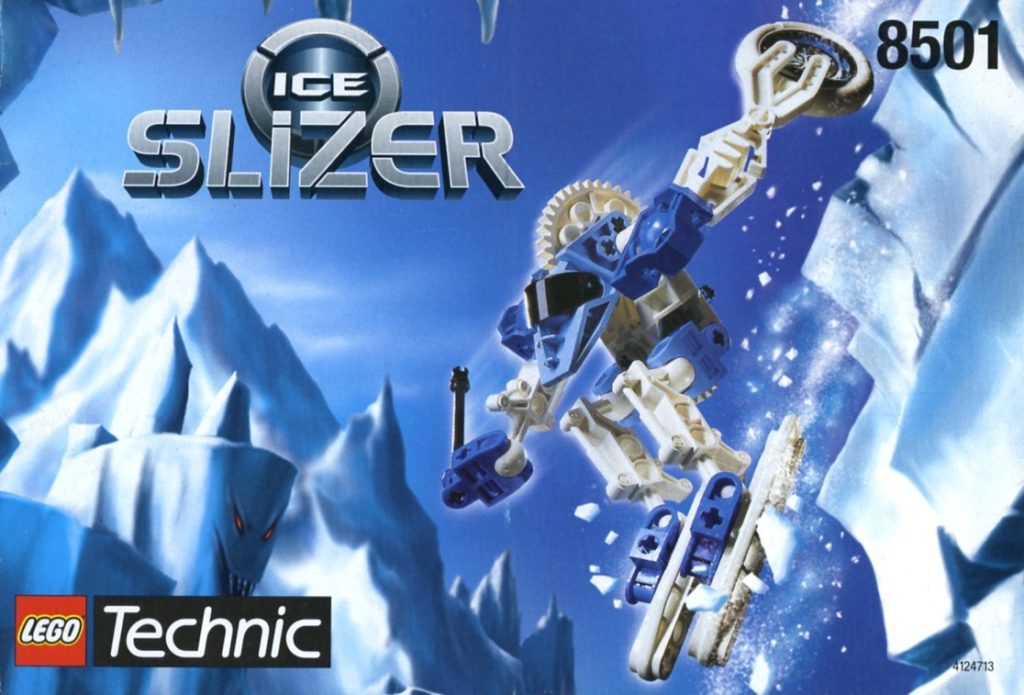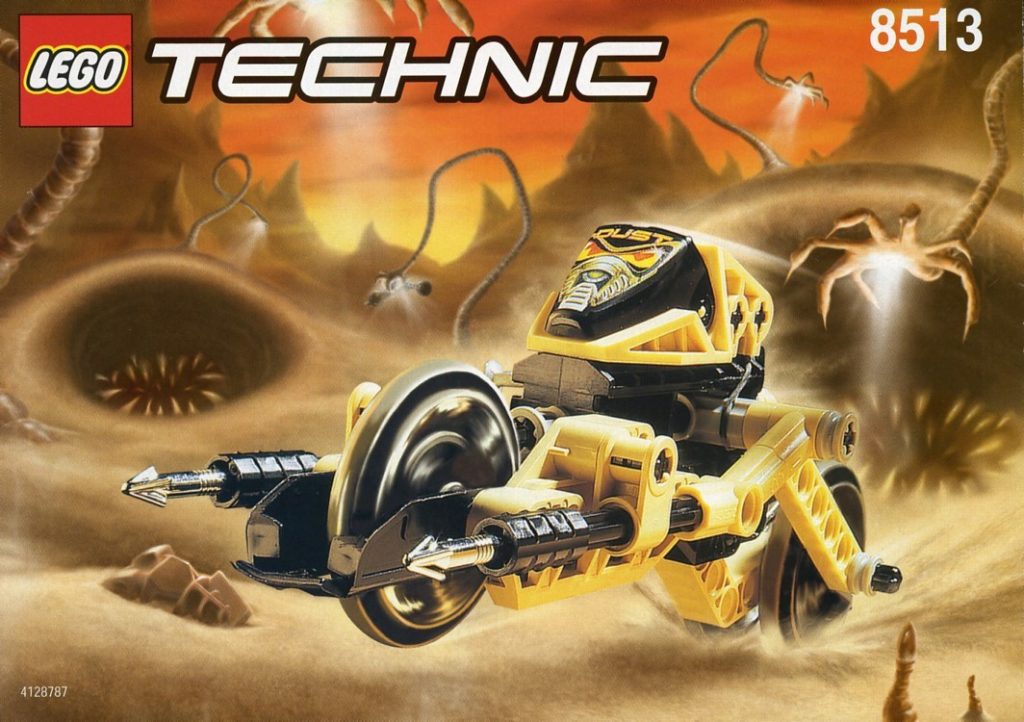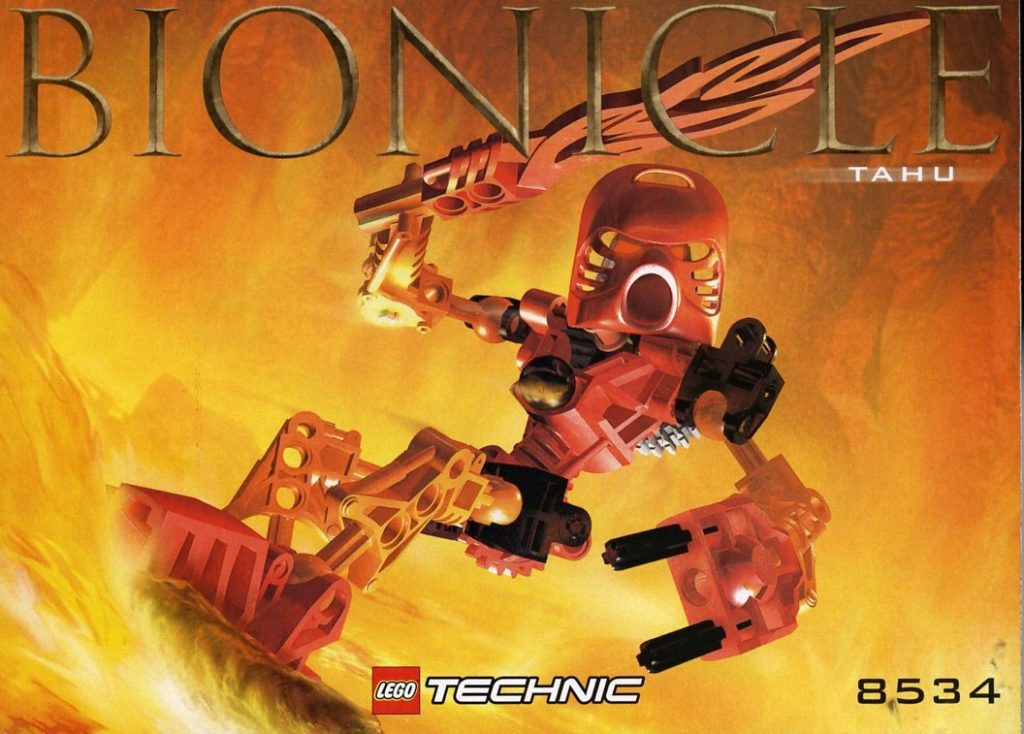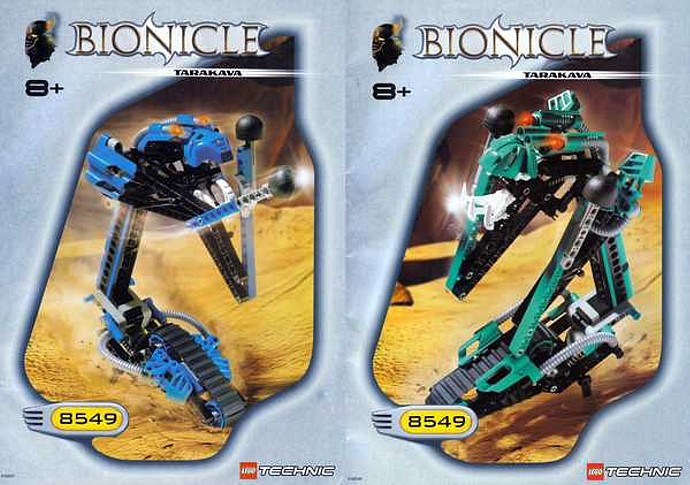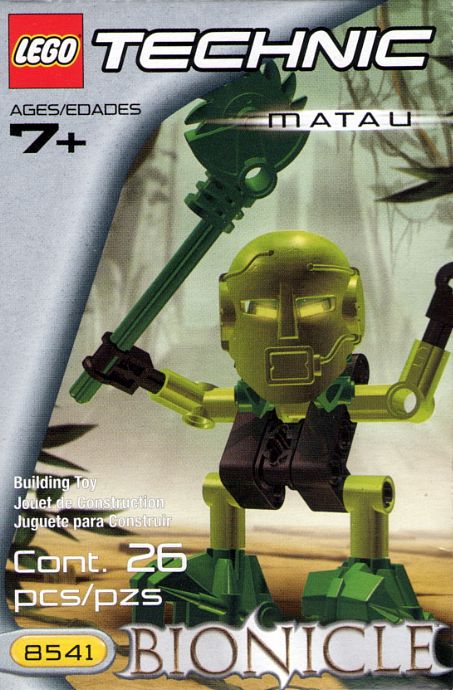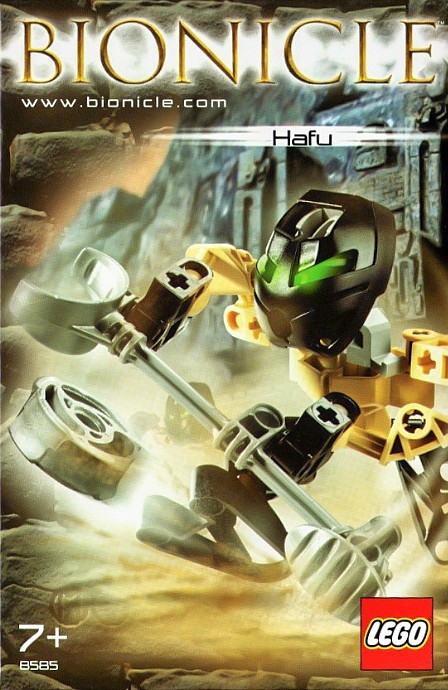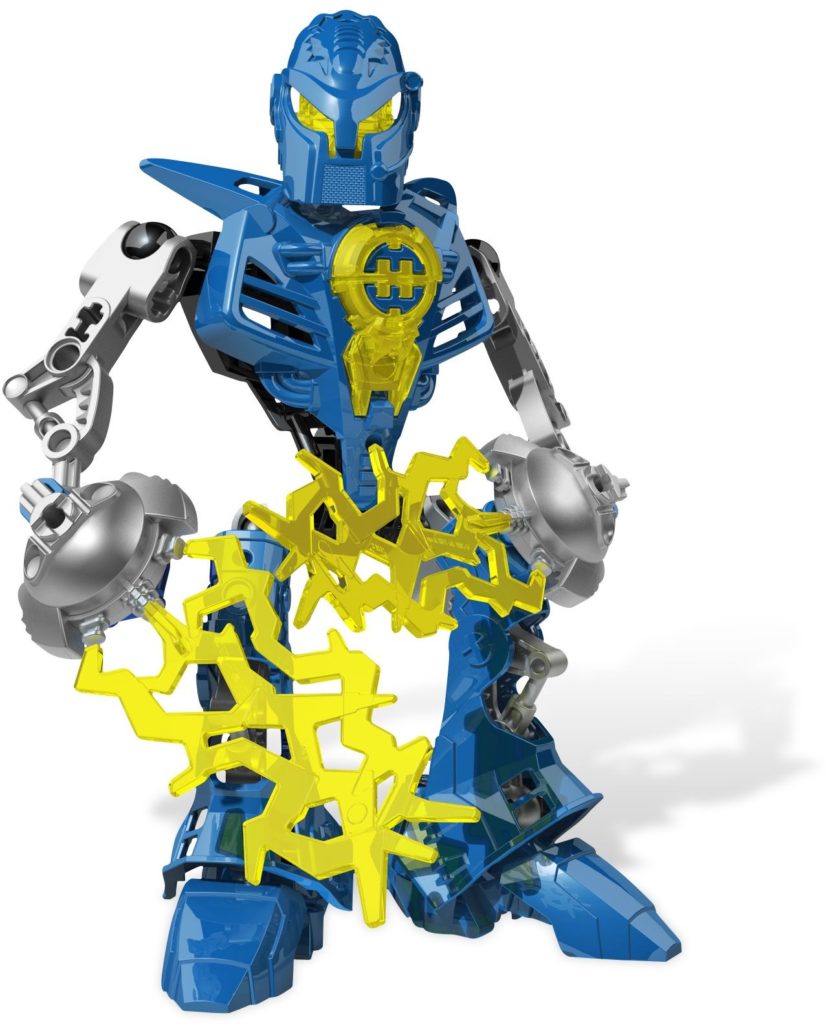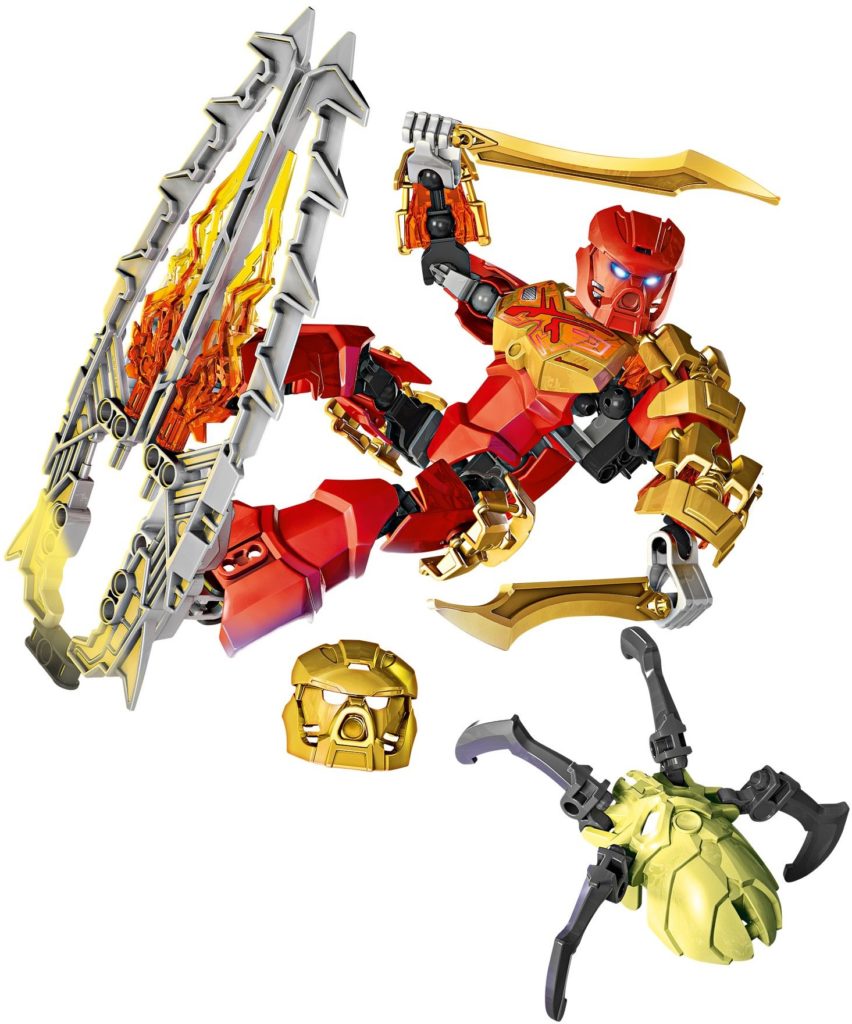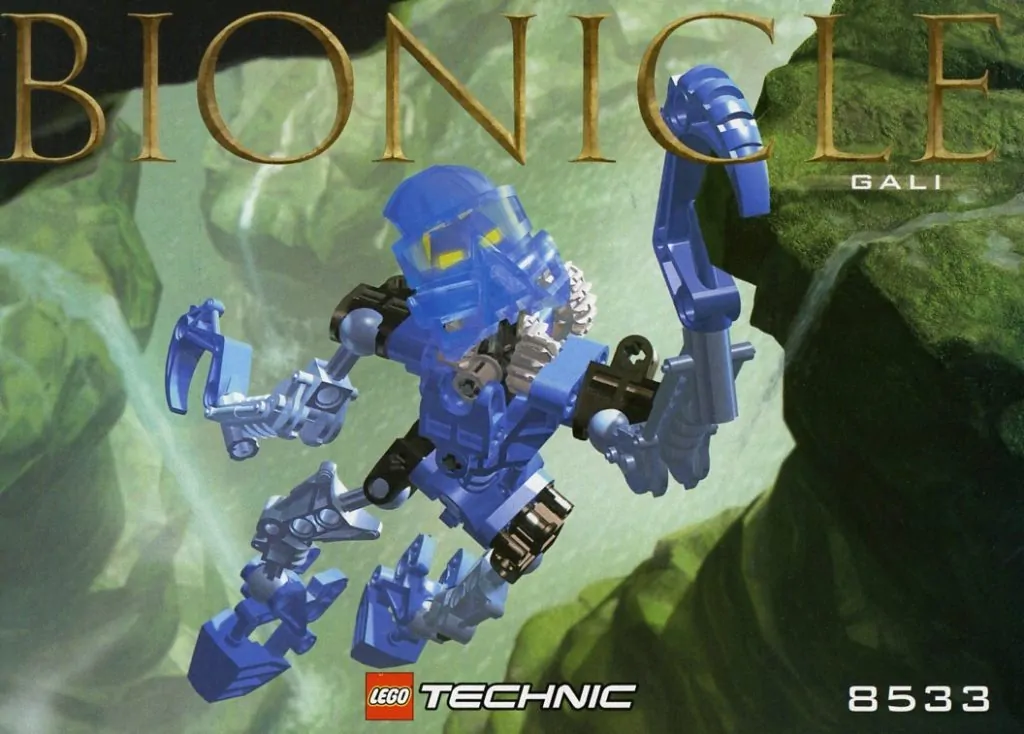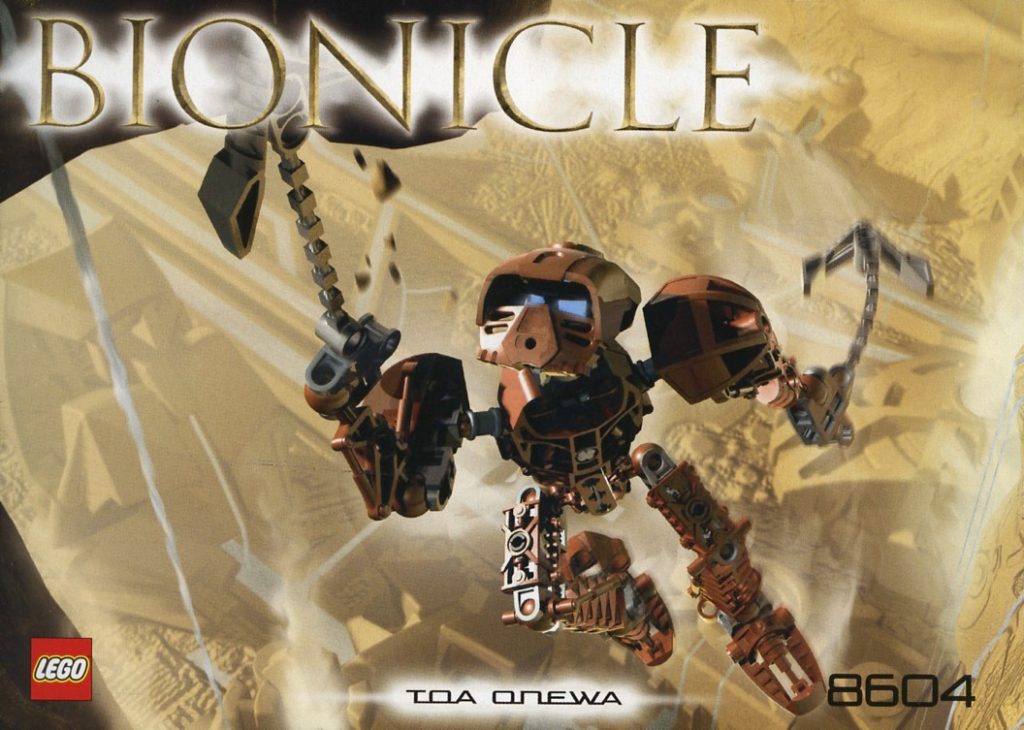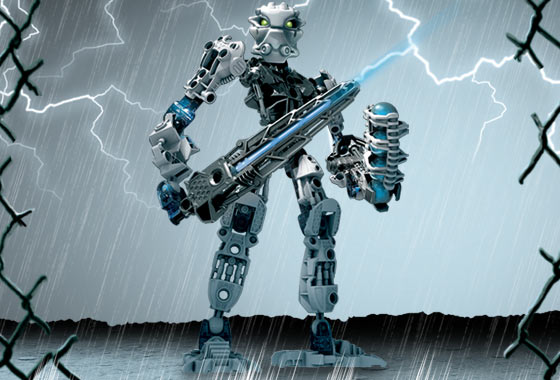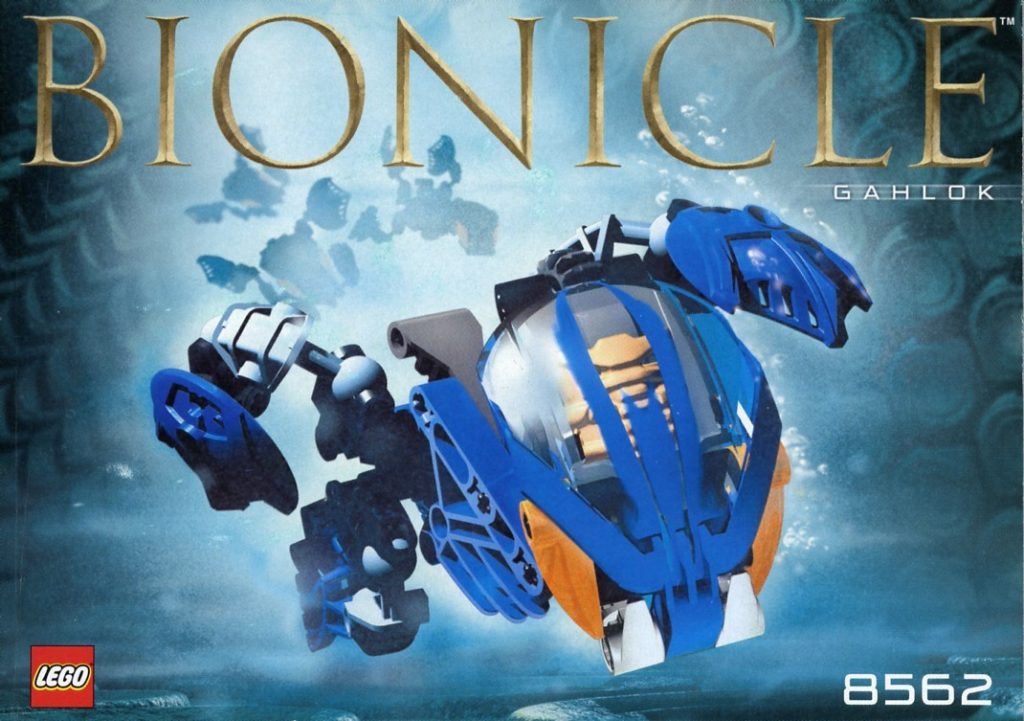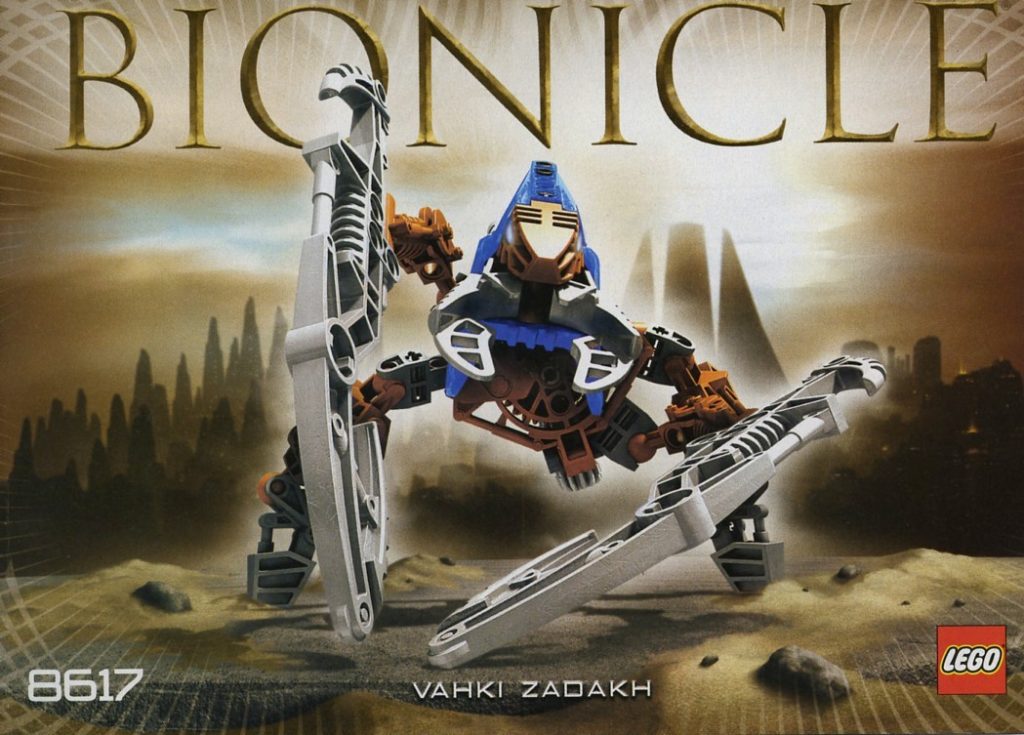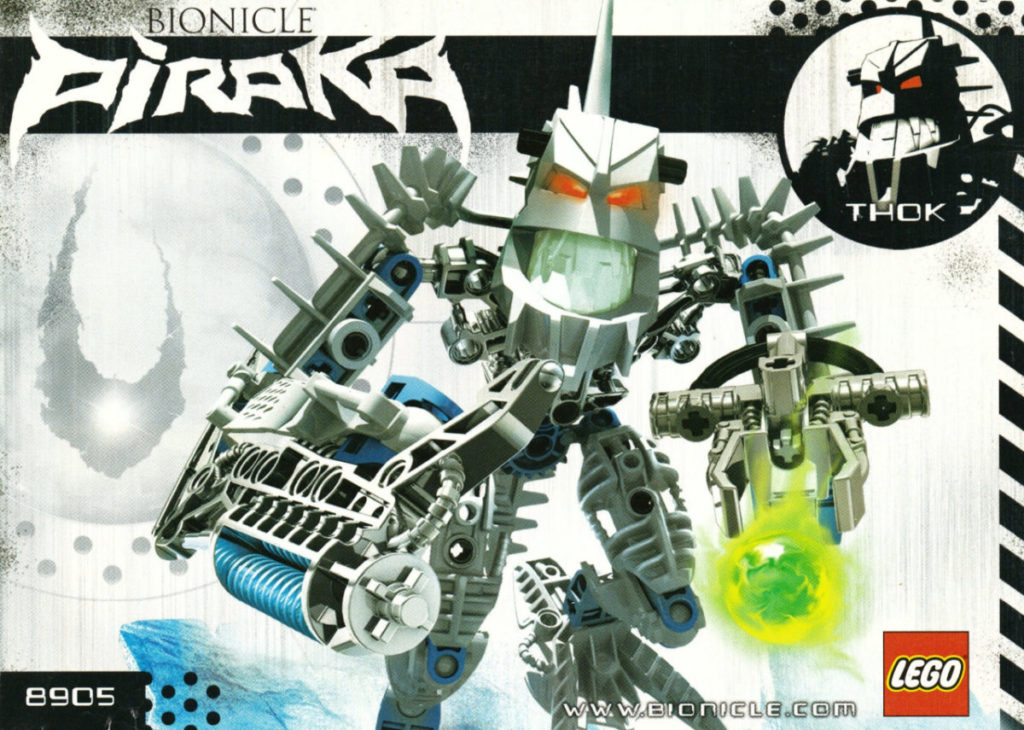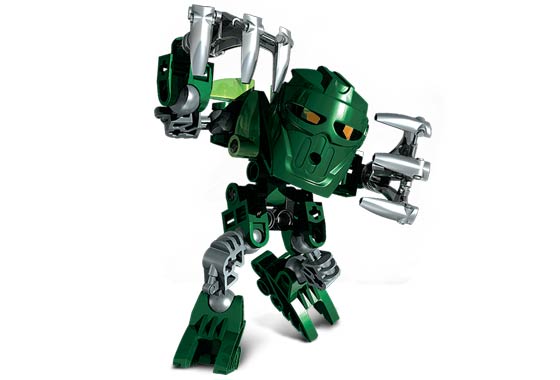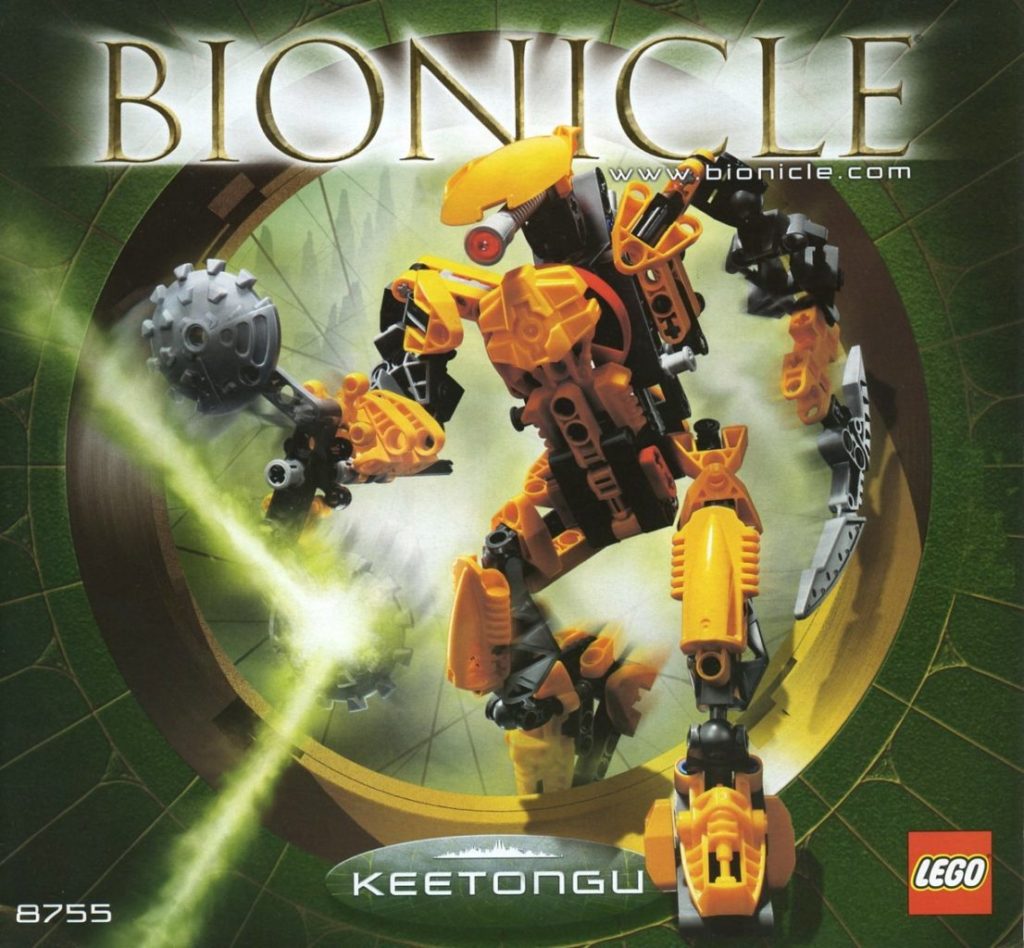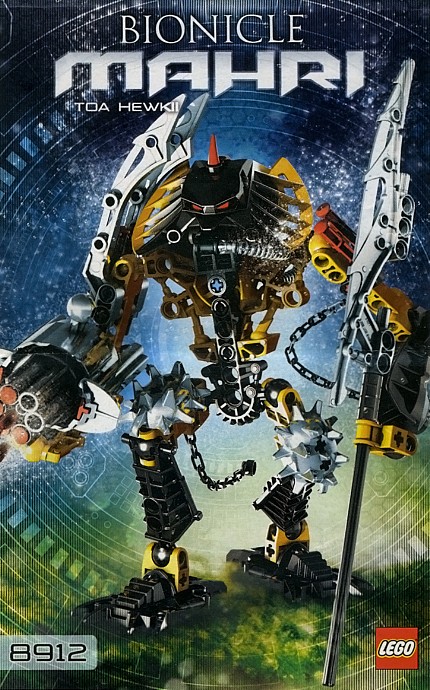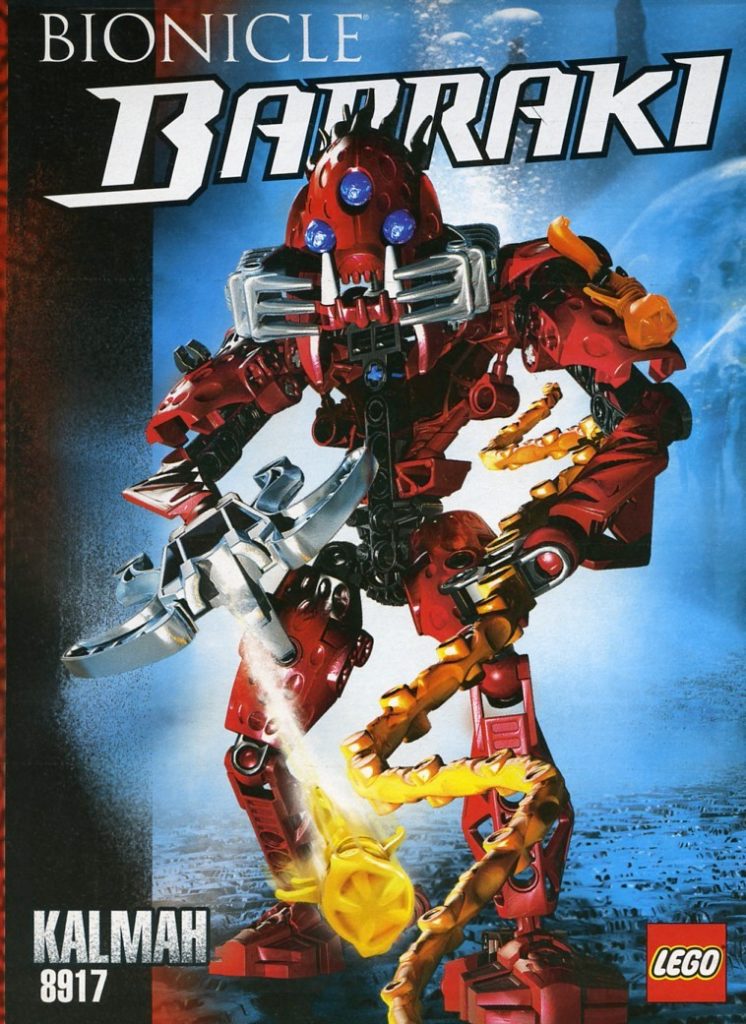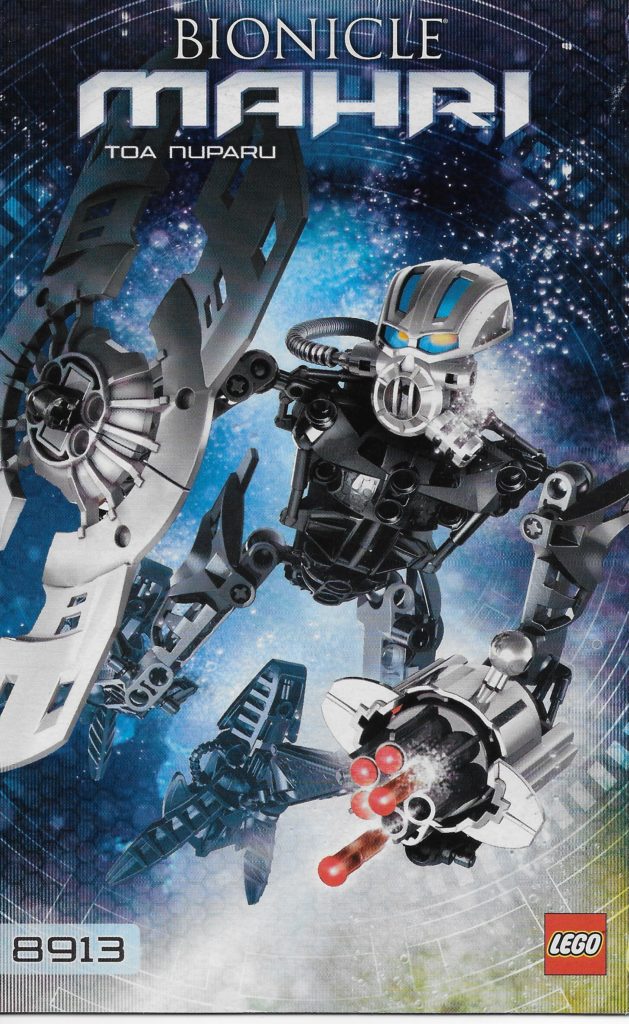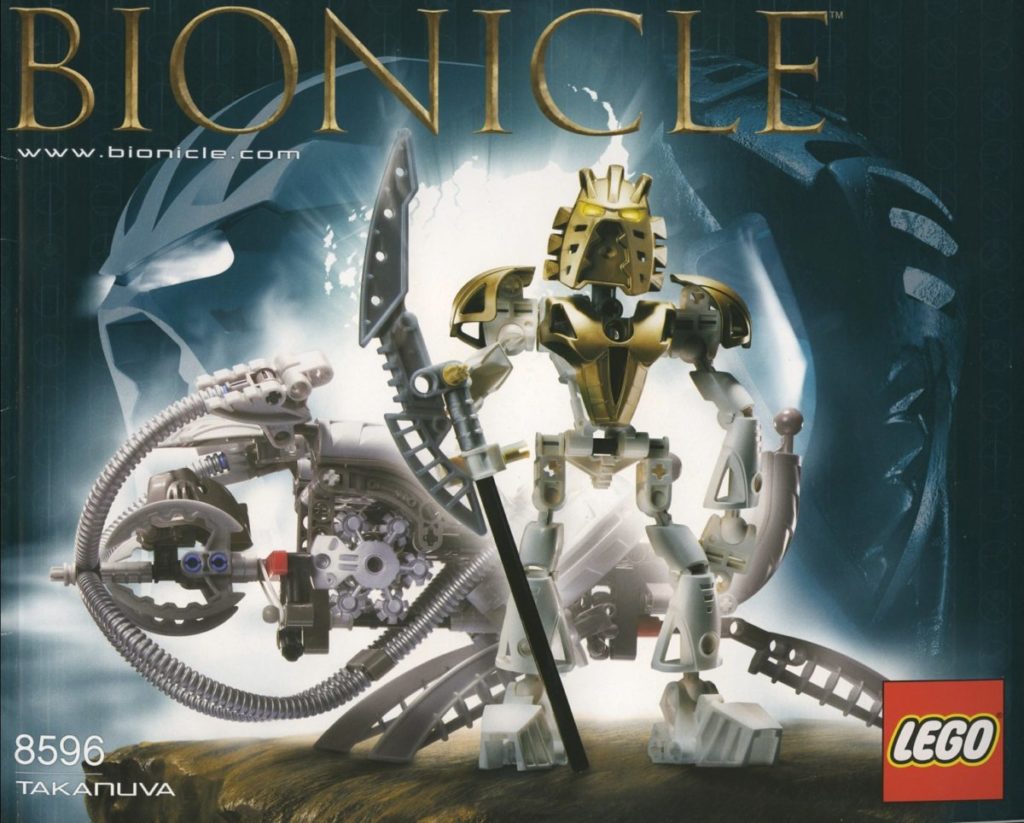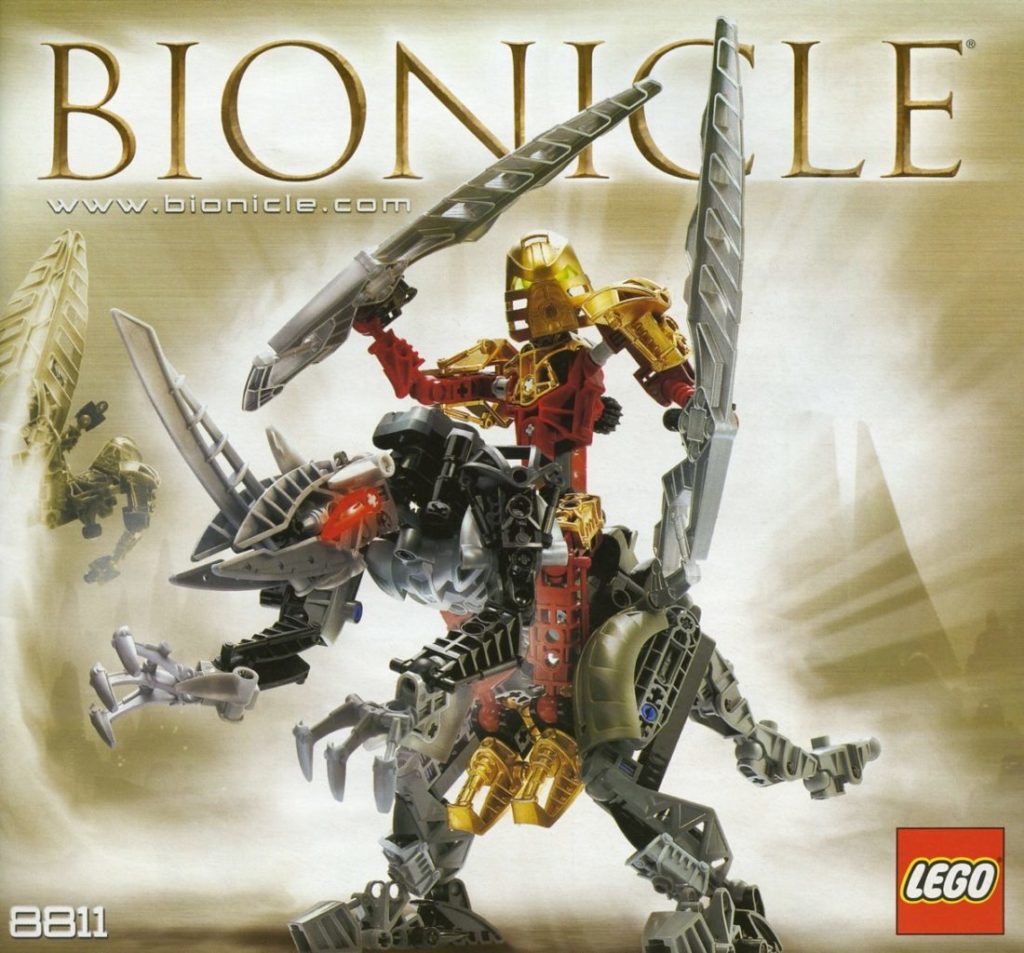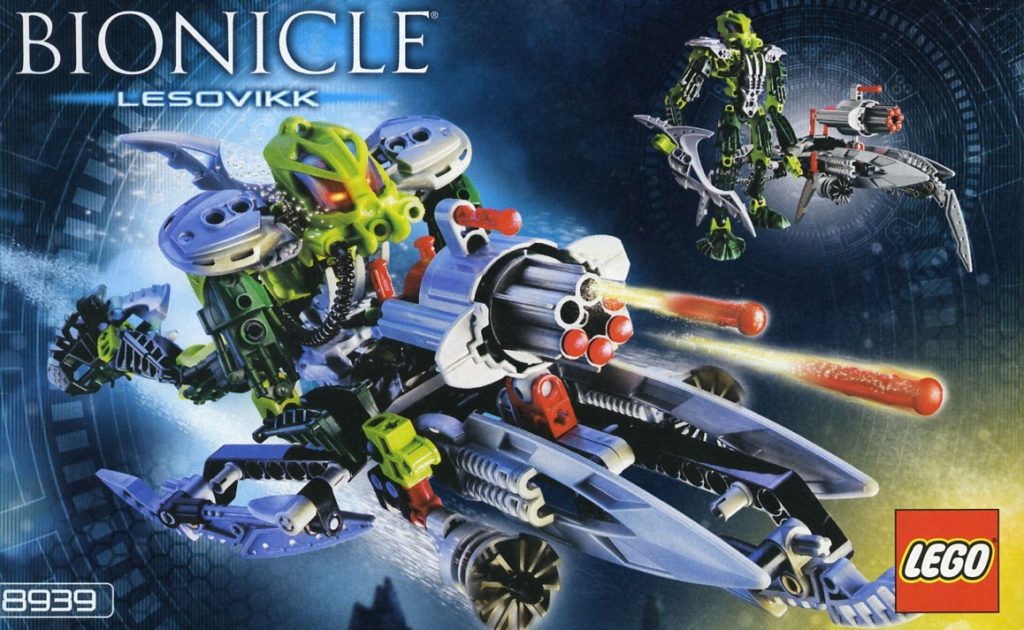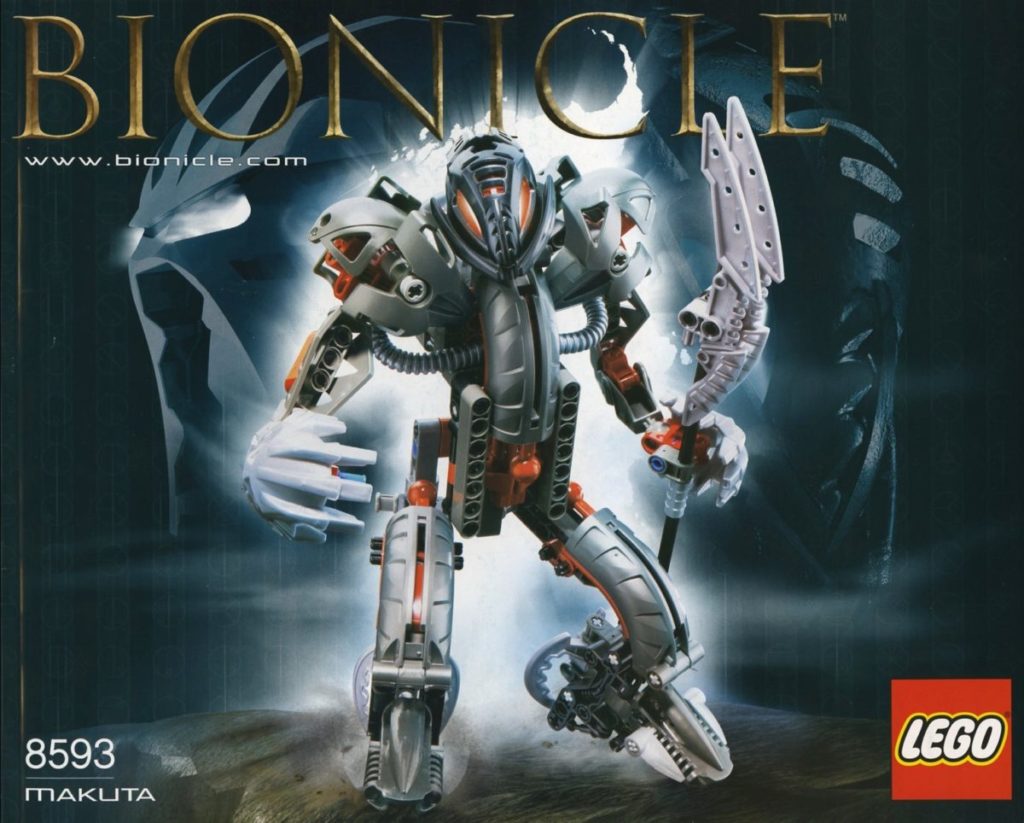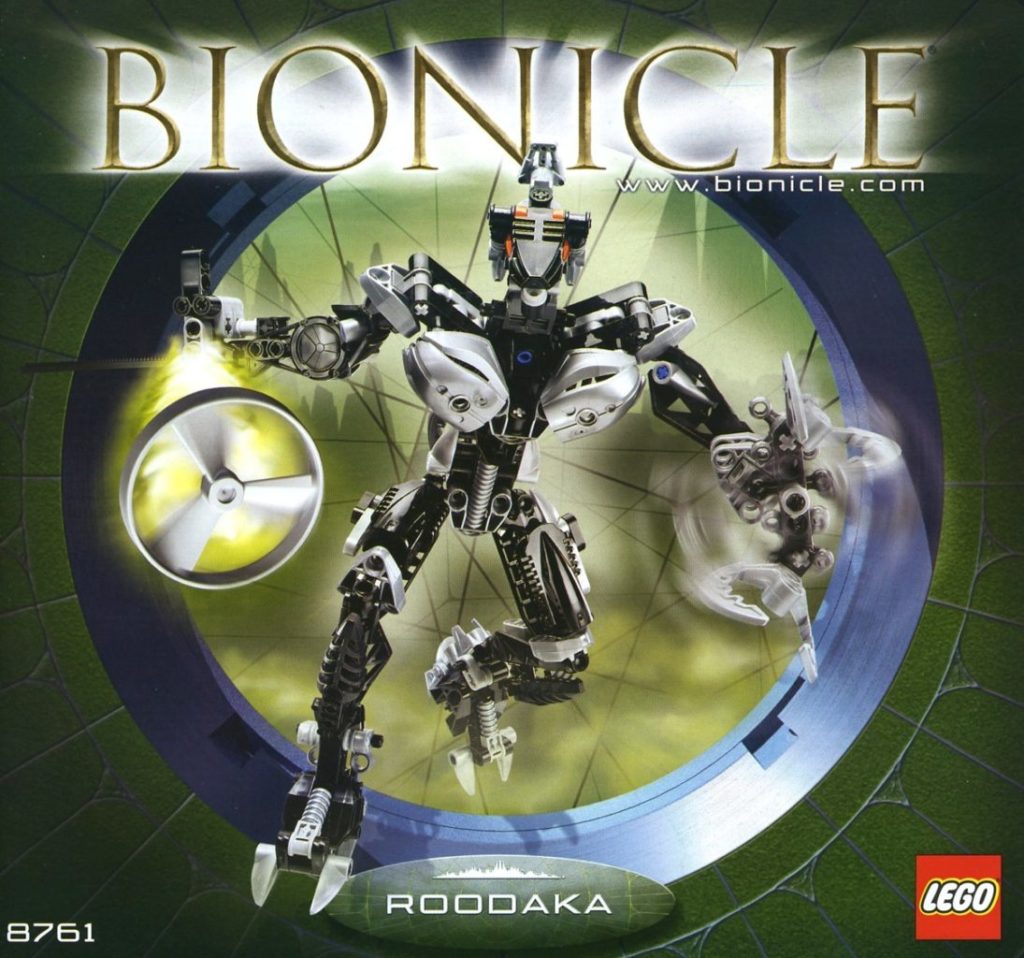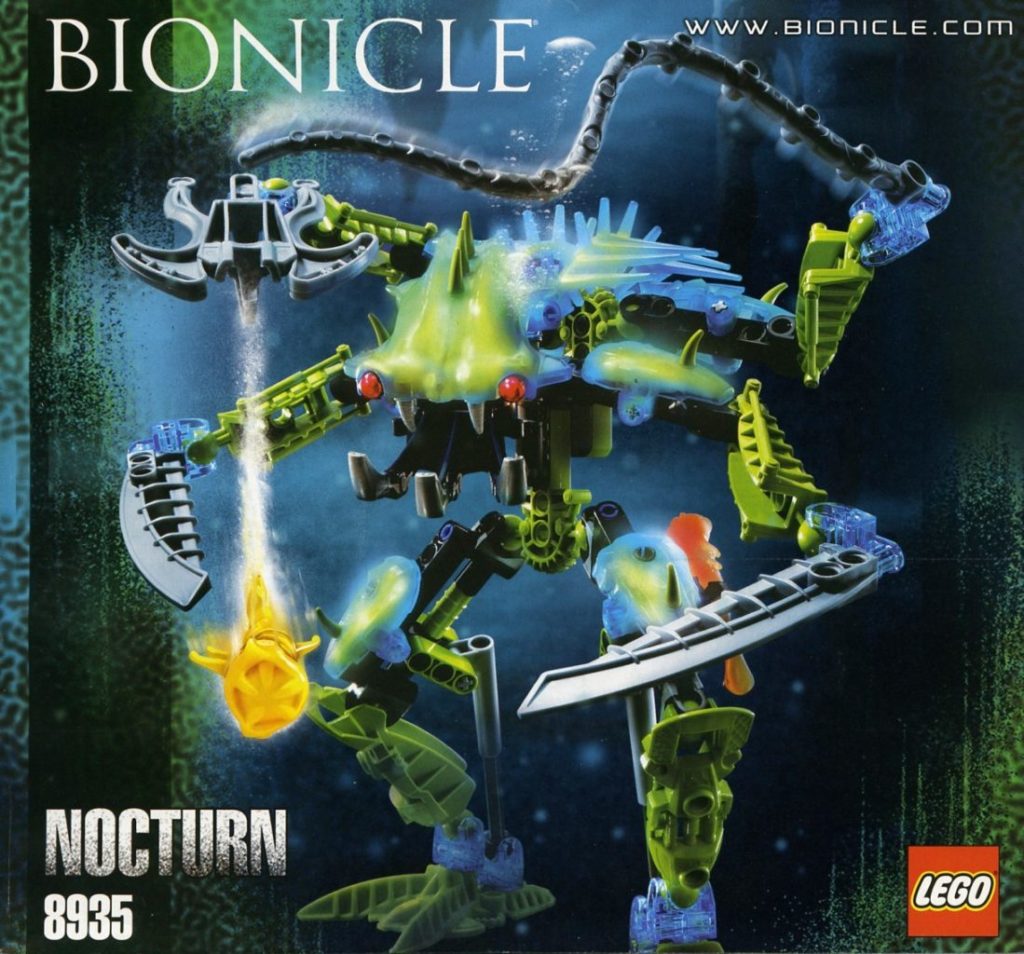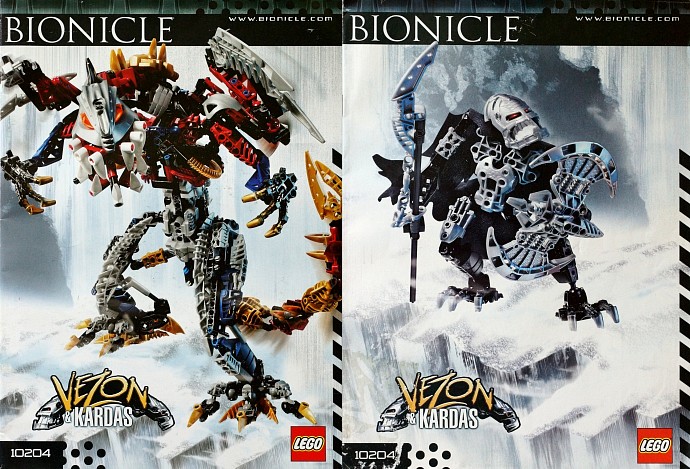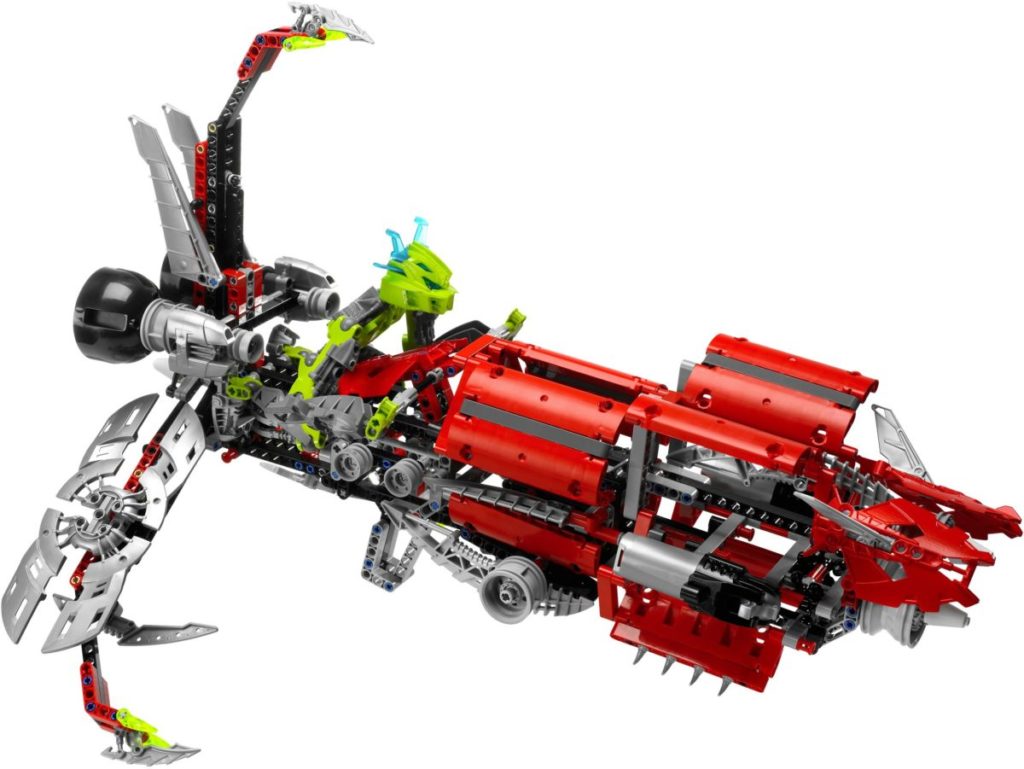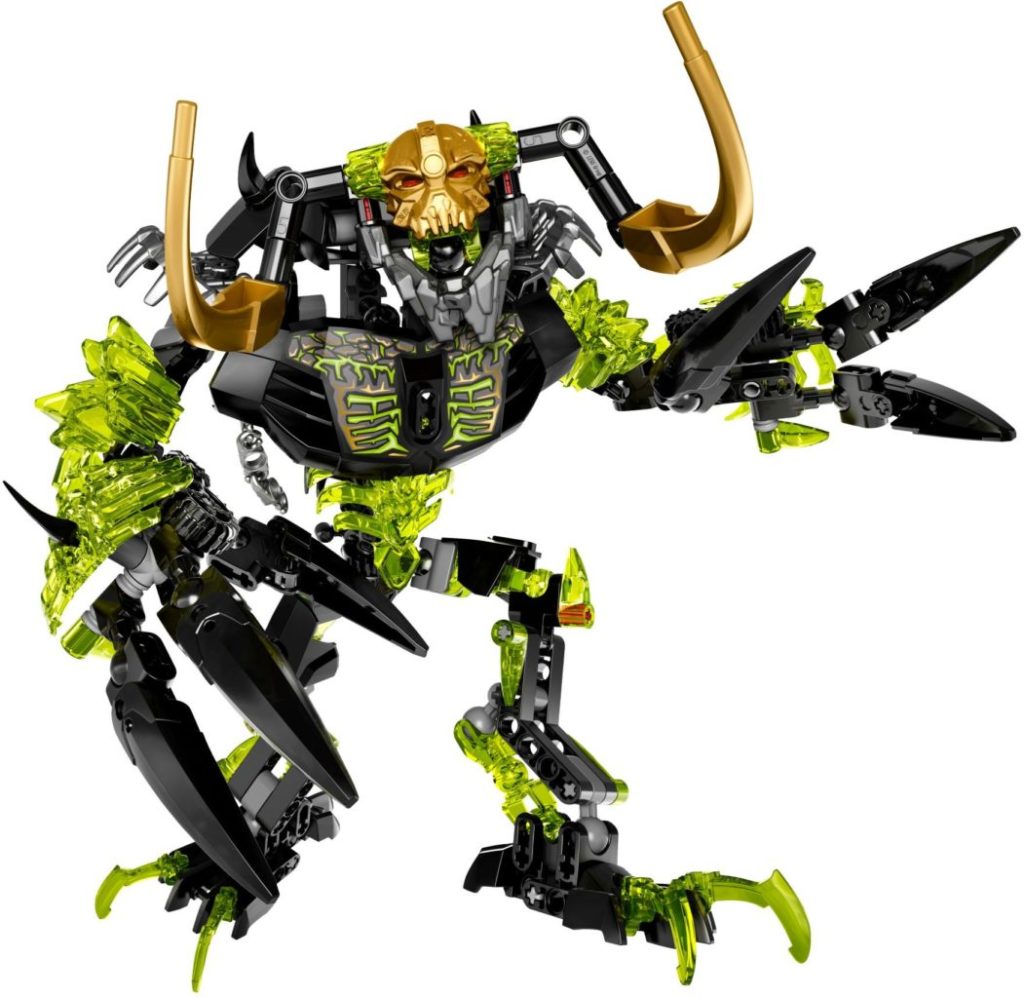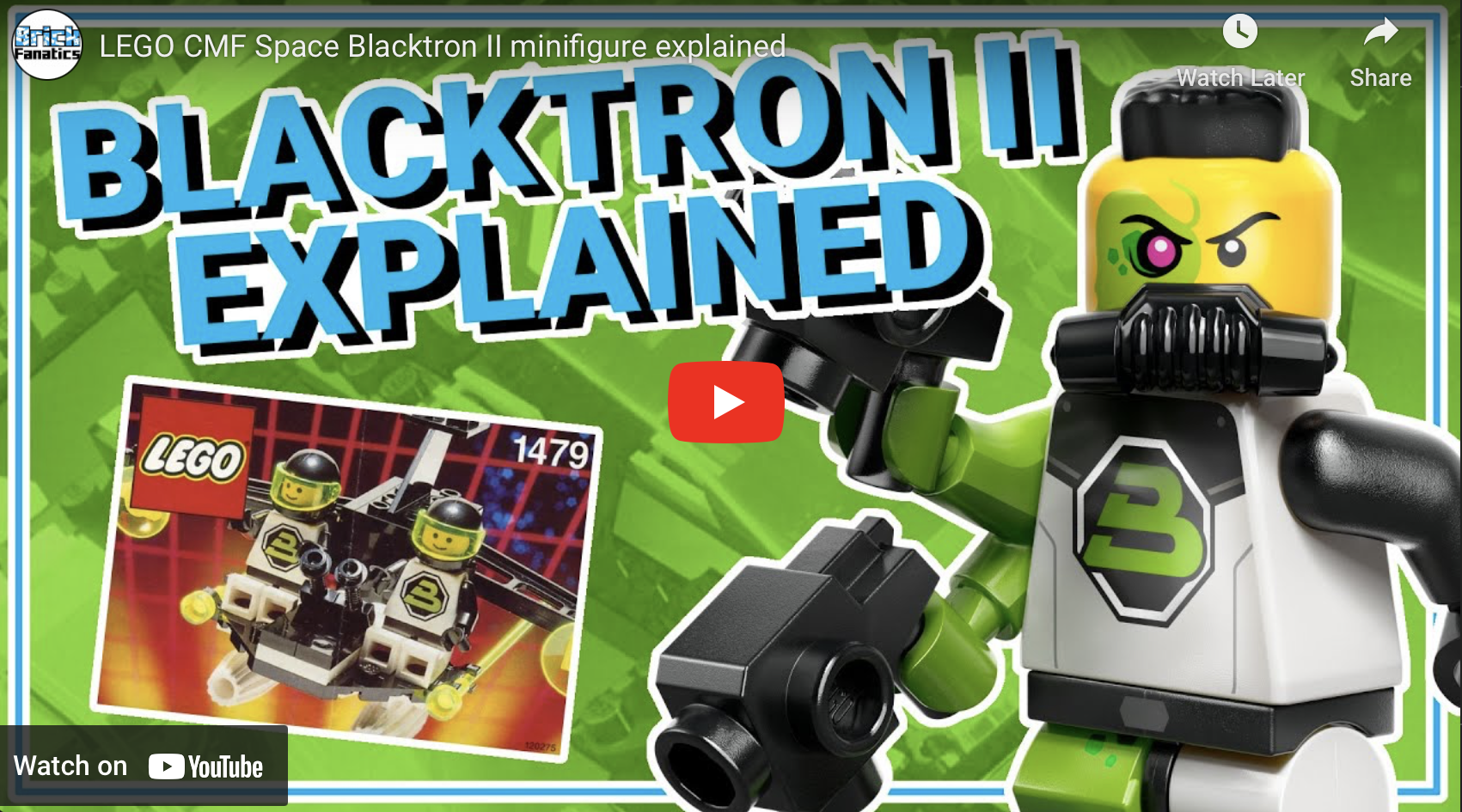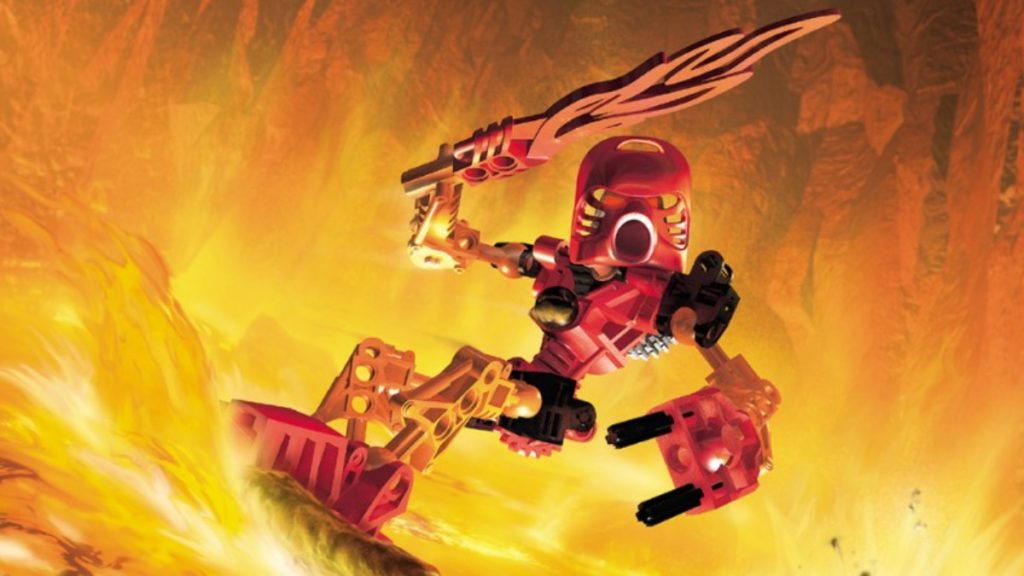
Six heroes, one destiny. That idea would run throughout the BIONICLE theme, one of the LEGO Group’s most successful (and ambitious) product lines. While it took us pretty far from the conventional LEGO set, BIONICLE earned thousands of fans and was a bright spot of many a childhood.
Combining a sweeping story with dozens of characters (and collectible elements), BIONICLE gave LEGO fans plenty to sink their teeth into. However, cookie-cutter product designs and old mistakes worked against it – and in hindsight, go some way to explaining the premature end of its reboot in 2015.
LEGO BIONICLE history
The BIONICLE theme depicted an epic conflict in a universe populated by ‘biomechanical’ creatures. Many of its sets focused – in one way or another – on a battle between two godlike entities. Mata Nui, the Great Spirit, is sent into a deep sleep by his evil brother Makuta. To awaken Mata Nui, a group of six heroes – known as the Toa – arrive on the island where Makuta is hiding. They must gather various Kanohi masks (artefacts of immense power) and fight several malevolent creatures before they can challenge Makuta himself.
This basic idea played out several times in the BIONICLE theme, which touched upon different eras of history and geographical locations. Over the years new teams of Toa were introduced, along with new enemies for them to fight. Their building techniques also became more sophisticated, and sets would increase in size as the theme progressed.
BIONICLE’s world and product line had several different inspirations. On a physical level, BIONICLE launched in 2001 as a spin-off from the Technic theme. This theme had, in turn, explored similar ideas to BIONICLE beforehand.
The Slizer and Robo Riders themes (released in 1999 and 2000 respectively) can be seen as the prototypes for BIONICLE itself. Each featured robotic characters, simple mechanical functions and elemental theming. These were all ideas BIONICLE would build upon to great effect.
They also featured highly collectible elements. Slizer offered throwable discs for separate purchase, while Robo Riders sold detailed wheel elements instead. BIONICLE would take a similar approach with ranges of collectible masks, at least in its early days.
The world and story of BIONICLE had a more unorthodox inspiration. As the theme progressed it was revealed the events of BIONICLE were playing out within a giant robot, rather than on a conventional planet. This idea was inspired by a designer called Christian Faber; when handed a prototype of a BIONICLE character, Faber envisioned the character as a piece of nanotech in a larger entity, rather than your run-of-the-mill action figure. This concept would shape the broader BIONICLE theme, in the accompanying lore if not the actual sets.
In its early days the theme also drew inspiration from Polynesian culture, using several words from the Maori language in the process. This decision resulted in legal action by three Maori tribes, and the LEGO Group responded by renaming one group of BIONICLE characters, and avoiding direct use of such words going forwards.
The first line of BIONICLE sets included the Toa – the heroes of the theme – and the Turaga, a collection of village elders. In a nod to their Technic ancestry, each of these featured basic mechanical functions; in the Toa’s case, this meant twisting a gear on the back to swing arms or legs. They also featured distinct colour coding and elemental theming, setting the stage for most future BIONICLE sets.
The Toa and Turaga were quickly joined by various monstrous entities such as the Rahi, the Bohrok and the Rahkshi. Matoran – the innocent villagers of the island – received figures too, with early versions reproducing the Slizers’ disc-throwing function. These often conformed to the same basic design conventions as the Toa, although their form factors naturally varied.
They also helped to establish some of the theme’s worst impulses. The most egregious were cookie-cutter product designs, and minor revisions of existing characters (usually through simple recolours). This was a habit the theme would never quite kick, even when it was eventually rebooted in 2015.
This mix of heroes, monsters, villagers and larger creatures would play out in various cycles for almost a decade. As time went by, the BIONICLE theme explored new environments, forgotten cities, underwater prisons and even alien worlds. All of these inspired new character designs and play features. The sets’ building techniques would also see refinement; characters gained greater articulation, and moved away from the mechanical functions of their forebears.
The Technic branding was swiftly abandoned, even as many Technic elements were still used in product designs. This reflected BIONICLE’s refinement of the ‘constraction’ concept – a term that referred to larger-scale buildable action figures. The basic idea would gravitate to licensed themes like Ben 10 and even (for a time) Star Wars.
In 2010 the BIONICLE theme was retired, but its successor was waiting in the wings. Hero Factory mimicked the form factor of BIONICLE (and even re-used many elements from it upon its launch). It’s not clear what motivated the shift, although BIONICLE’s convoluted story might have had something to do with it. The story of BIONICLE played out over centuries, and featured a complicated web of characters and events. A clean sweep may have been appealing, allowing the LEGO Group to explore similar ideas without narrative baggage.
In 2015, BIONICLE sets returned to store shelves with a rebooted premise. However, certain characters (such as the original Toa) returned. While it shared several features with the original theme, it also replicated some of BIONICLE;s worst impulses – swift, pointless revisions of the main characters being the most obvious. This might explain the reboot’s short shelf life: by 2016, the theme had been retired once again, with the constraction figure concept disappearing altogether two years later.
The future of BIONICLE is uncertain. Its bespoke elements are firmly at odds with the LEGO Group’s current design philosophy, which prefers to use parts with a higher degree of creative flexibility. It may also be redundant by today’s standards, as the modern-day NINJAGO theme performs many of the same functions that BIONICLE did. Both themes follow a team of six heroes going on adventures in exotic environments, with new weapons, vehicles and characters appearing in that framework.
That said, BIONICLE still has its fans. BIONICLE-themed LEGO sets have occasionally gained traction on the LEGO Ideas platform, which clearly reflects fans’ interests. The BIONICLE theme also did very well in a fan vote, which was used to determine a special 90th anniversary LEGO set. Even if BIONICLE never returns to the LEGO line-up, its fond memories will endure for some time to come – although it’s currently rumoured to be making a comeback in 2023…
LEGO BIONICLE sets
The BIONICLE theme was a massive success for the LEGO Group, and helped the company survive a period of financial instability. This was rather ironic, as – in many respects – BIONICLE doesn’t share much DNA with traditional LEGO sets. While it used several Technic elements (and offered limited compatibility with LEGO bricks) many BIONICLE elements were created from scratch. New pieces were produced to represent limbs, heads and weaponry, although several of these found use in conventional LEGO sets.
BIONICLE sets over the years could generally be grouped into four categories. Toa were the main, medium-sized heroes of the theme; they generally released in groups of six, with each one representing a specific elemental force. Each Toa came with unique weaponry and a Kanohi – a removable mask that, within the lore, granted them additional abilities.
Toa were typically accompanied by a corresponding team of six villains; some of these, like the Vahki and Piraka, were roughly humanoid. Others like the Bohrok and Visorak drew inspiration from other creatures, such as insects. In either case these were roughly to scale with the Toa, and featured the same colour coding.
Matoran were the humble villagers of the Bionicle theme, and were smaller and simpler than the Toa. However, they often shared several characteristics with their contemporary Toa – similar colour schemes, removable masks and some kind of weaponry. Rounding out the product selection were warriors; this term referred to larger, more complex sets that contained characters of significance.
Early BIONICLE sets (like 8534 Tahu and 8549 Tarakava) are rather crude by today’s standards. They suffer from limited articulation, boxy bodies and bald Technic components, while specific body parts (like hands) are poorly rendered, if they’re rendered at all. Certain enemies like the Rahkshi also struggled with weak limbs, which made posing difficult.
Still, it wasn’t all bad. The Bohrok (like 8565 Kohrak) fared better with articulation, and featured a neat action feature. By pressing a trigger on the back, the head of the Bohrok could strike forward to attack enemies. They could also fold into a rough sphere for play or storage.
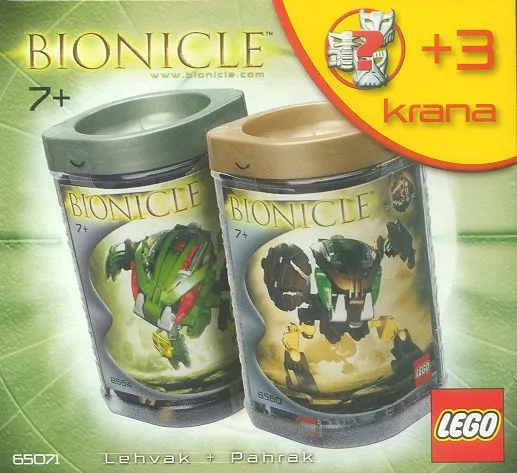
The early Toa and Bohrok helped introduce interesting uses for LEGO packaging. Rather than cardboard boxes, smaller BIONICLE sets often came in plastic canisters. These could be used to store the models, but they also had other features. Using a bespoke piece, Bohrok could be suspended within the canister, emphasising their alien nature. Later packaging would incorporate pin holes into their plastic components, allowing them to be incorporated into custom LEGO builds.
Other refinements to product design swiftly followed. The Toa Metru (released in 2004) better balanced articulation and mechanical detail. Like the Toa Nuva (a slight revision of the originals, launched two years prior) these Toa could also use their weapons in innovative ways. 8606 Nuju could turn his Crystal Spikes into snow shoes, for instance, while 8605 Matau could turn his Aero Slicers into wings.
Later Toa would move further away from internal geared mechanisms, focusing on greater movement via ball-and-socket joints instead. Despite this innovation, Toa (like most BIONICLE sets) generally suffered from cookie-cutter design. Toa within each wave were very similar in structure to each other, making multiple purchases rather dull.
That changed in 2007, with the Toa Mahri and Barraki product lines. BIONICLE sets in this year took place in an underwater environment, which mutated the creatures inhabiting it. This resulted in a greater variety of character designs – the Barraki were inspired by a variety of sea creatures, while the Toa each enjoyed unique body shapes. Later product lines would take a similar approach to their character designs, although fatigue was arguably starting to set in by this point.
Warriors offered an exciting mix of larger-scale characters and Toa with flashier equipment. 8596 Takanuva (released in 2003) combined a familiar Toa design with golden armour and a detailed vehicle called the Ussanui; this vehicle re-used components from enemies like Bohrok and Rahkshi, representing the Toa’s victory over them. It also featured built-in landing gear, which could be retracted when the vehicle was in flight.
This was an idea the LEGO Group would explore on multiple occasions in the future. 8811 Toa Lhikan and Kikanalo (released in 2004) combined a gold-hued Toa with a rideable beast. In 2007, 8939 Lesovikk combined an ancient underwater Toa with a ‘sea sled’; like the Ussanui, this vehicle’s landing gear could be flipped up as required. A year later came 8697 Toa Ignika, who possessed the Mask of Life – a key MacGuffin in the BIONICLE storyline – and a rideable hoverboard, increasing their cool factor considerably.
Larger characters tended to reduce their dependence on specialised elements, using off-the-rack bricks in their construction for the most part. An early example of this was the 2003 set 8593 Makuta. The big bad of the BIONICLE universe featured sinister metallic armour, a complex build and an exclusive mask. However, he also suffered from the limited articulation of this era, making this set one for the diehard fans alone.
Later warrior releases fared much better. 8761 Roodaka (released in 2005) featured a more realistic body shape and extensive articulation, even if she had no hands to speak of. This female character had several feminine traits including heeled shoes, the suggestion of a ponytail and even breasts. In a theme where most characters were male (or ambiguously gendered) Roodaka stood out from the crowd long after her release.
Another exciting release was 8935 Nocturn, released in 2007. This undersea warlord featured a more organic construction, with lime green limbs and flexible spines. Parts of his body also glowed in the dark, mimicking the bioluminescence of certain sea creatures.
It was around this time that the LEGO Group started to produce conventional LEGO sets with BIONICLE branding. These recreated key scenes from the BIONICLE storyline, combining familiar LEGO bricks with bespoke elements. An early example of this idea was 8759 Battle of Metru Nui. This stretch of wall came with catapults, a retractable bridge and several small Visorak creatures.
Bestial versions of the Toa (known as the Toa Hordika) appeared in this set, although unlike minifigures they lacked articulation. Later sets of this ilk shifted to a different location; the characters for these sets received more detailed figures, as well as movable arms and heads.
In classic LEGO fashion, certain BIONICLE characters could be broken apart and combined into larger entities. These were a mixed bag from a design perspective, but exceptions did exist. 10204 Vezon and Kardas combined three warrior sets to build a mighty dragon, complete with folding wings and a swinging tail. Despite a muddled colour scheme and some posing difficulties, this set was (and is) a magnificent entry in the BIONICLE theme.
71316 Umarak the Destroyer.
Towards the end of the theme’s lifespan, BIONICLE introduced rideable vehicles for its characters. This idea had been explored before, but these new vehicles were considerably larger and more detailed. A stand-out from these was 8943 Axalara T9, which featured retractable cannons and a hot rod-red colour scheme. Another notable set was 8991 Skopio V1, which could transform from a quadrupedal mech to a tracked vehicle.
The reboot was relatively less ambitious than the broader theme that preceded it, sticking to Toa, Matoran (now called Agori) and the occasional oddity. Still, in some respects the theme went out with a bang. 71316 Umarak the Destroyer featured a beastly monster with geared mechanisms in his clawed hands. He also came with an enticing mix of transparent, neon-green elements, and a dual-moulded version of the Mask of Control.
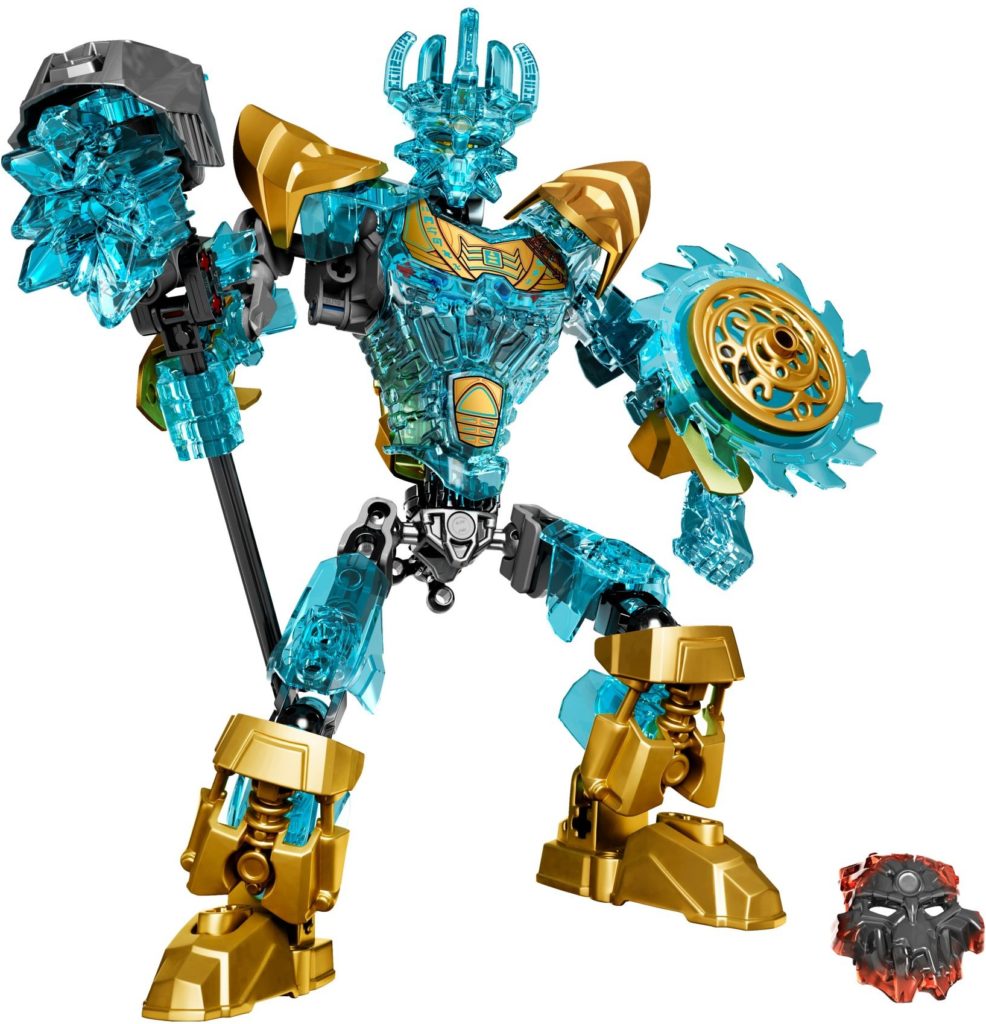
71312 Ekimu the Mask Maker – an analogue to the Great Spirit Mata Nui – offered a beautiful gold and trans-blue colour scheme. This extended to the Mask of Creation he wore – a particularly complex element, and one that would nicely cap off any BIONICLE collection.
LEGO BIONICLE Heroes
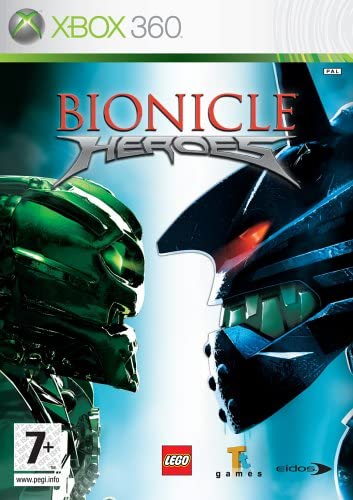
The BIONICLE theme has inspired several video games over the years. These typically explored whichever era of BIONICLE history was in vogue at the time, and featured simple action-adventure gameplay. A later example was BIONICLE Heroes, released in 2005 for multiple game platforms. The lack of ‘LEGO’ in the title suggests that by this point, BIONICLE was a name that could largely stand on its own.
Unlike other BIONICLE games, BIONICLE Heroes wasn’t too concerned with canon or even tone. It took place on Voya Nui, an island invaded by rogue bounty hunters called Piraka. As a new hero that arrives on the island, your ultimate job is to defeat the Piraka and recover the fabled Mask of Light. Along the way you must fight off enemies from across BIONICLE history, including Visorak, Rahkshi and the Piraka themselves.
Gameplay shared many features with the LEGO Star Wars games (Traveller’s Tales worked on both of these). Players travelled through a series of island environments, smashing up LEGO objects and fending off the hostile native wildlife. From time to time, players could use a Force-like ability to assemble LEGO models, and collect LEGO elements to fill a meter. This in turn triggered ‘Hero Mode’, making players immune to all damage.
While the game added some humorous elements to BIONICLE (something typically absent from the theme), reviews for the game were mixed. Critics pointed to its low difficulty and boring, repetitive gameplay – the tasks you performed at the start weren’t all that different from the ones at the end of it. Moreover, unlike contemporary LEGO games, it lacked any kind of multiplayer or character creation features.
BIONICLE’s complex story and diverse character roster made a BIONICLE video game an enticing prospect. However, despite numerous attempts, it was an opportunity the LEGO Group would never quite carry off.
LEGO BIONICLE 2023
While the LEGO Group chose to focus on Castle and Space for its 90th-anniversary celebrations in 2022, we did get one or two nods to BIONICLE in sets like 11021 90 Years of Play. The theme is now rumoured to come back in an even bigger way in 2023, with a gift-with-purchase set potentially named 40580 Buildable Tahu. Exactly what form that model will take – if it exists at all – remains to be seen.
LEGO BIONICLE Black Friday
Should BIONICLE ever return proper, visit this page for our predictions on LEGO BIONICLE Black Friday discounts.


